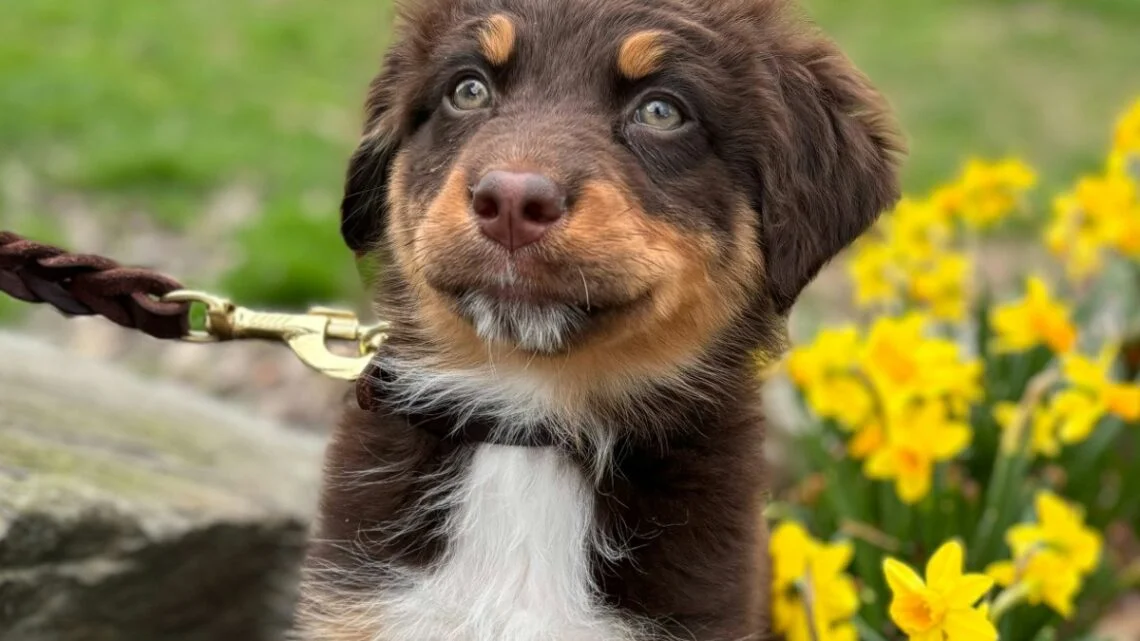
Spring risks for dogs that you need to avoid
By Alison Frost, ProDog Raw’s resident expert and canine nutritionist.
Spring is a season dog care professionals look forward to; saying farewell to rainy, cold walks is a huge relief! Although, it does come with risks that you need to be aware of. From cleaning products to plants, fertilisers, stagnant water, ticks and more, it’s important that you’re aware of spring hazards to keep dogs healthy, happy and safe.
Lambs, ducklings, and goslings
On spring walks dogs should be kept on the lead in the presence of lambs, ducklings and goslings. This is mainly to stop dogs from hurting wildlife and livestock, either directly or by trampling on nests. It’s also more important than ever for owners to pick up their dogs’ poo; faeces can be dangerous for livestock as it often carries diseases.
Plants and foliage
Spring is synonymous with beautiful plants; however, some are toxic for dogs if eaten. For example, flowers that come from bulbs, such as daffodils and tulips, must be avoided. In any instance, it can be difficult for owners to identify which plants are toxic so we recommend playing it safe and, as best you can, preventing dogs from eating foliage.
Fleas and ticks
Fleas and ticks are prominent in the spring and they’re a risk to all dogs, for they can carry parasites and dangerous bacteria. It’s vital that dog care professionals are equipped with tick removers on walks.
Spring plug-ins and air fresheners
Spring plug-ins and air fresheners are very toxic to pets; they can cause hot spots, skin irritations and neurological issues. That said, I would recommend dog care professionals look for more natural ways to freshen their homes.
Grass seeds
As spring turns into summer, grass seeds can significantly impact dogs’ health. Their pointy shape can penetrate the skin, causing redness or swelling, which can lead to abscesses, sores, internal tissue damage and infections that could require surgery. If grass seeds attach to their eye, this can also result in the loss of eyesight or complete eye removal in extreme cases. On walks, dog care professionals should avoid long grass.
Adders are also found in certain areas of the UK and can make dogs extremely ill. Owners should prepare their dogs by focusing on recall training and if they think they’ve been bitten, seeking emergency care right away.
Insect stings
In the spring dogs are often stung by bees, mosquitos and other insects. This can be painful and result in swelling, crying, limping and drooling, among many other signs of discomfort. Of course, these bites can be particularly concerning if your dog experiences an allergic reaction. If you think this is happening – symptoms include hives, swelling, difficulty breathing, vomiting and diarrhoea – owners should always consult an emergency vet.
Seasonal allergies
Just like us, dogs can have various seasonal allergies which cause itchiness, infections, and digestive discomfort. For example, they too can have hayfever. These allergies can be eased with targeted supplements.
Cleaning products
A range of spring-cleaning products are toxic for dogs. For example, laundry detergents, drain cleaners, bleach cleaners, essential oils, and more can cause them harm. When buying cleaning products, it’s important to look out for some key ingredients, including bleach, alcohol, ammonia, phthalates, chlorine and hydrogen peroxide.
Garden chemicals
As dogs spend more time in the garden come spring, it’s important that dog care professionals consider potential poisons surrounding them. For example, fertiliser, weed killers, rat poison and slug killer are among the many garden products that can harm dogs.
Spring foods
Whilst spring foods might be delicious for us, there are some seasonal items that dogs can’t share. Raisins, currants, onions, and cooked bones, for example, are toxic for dogs and should be avoided.






